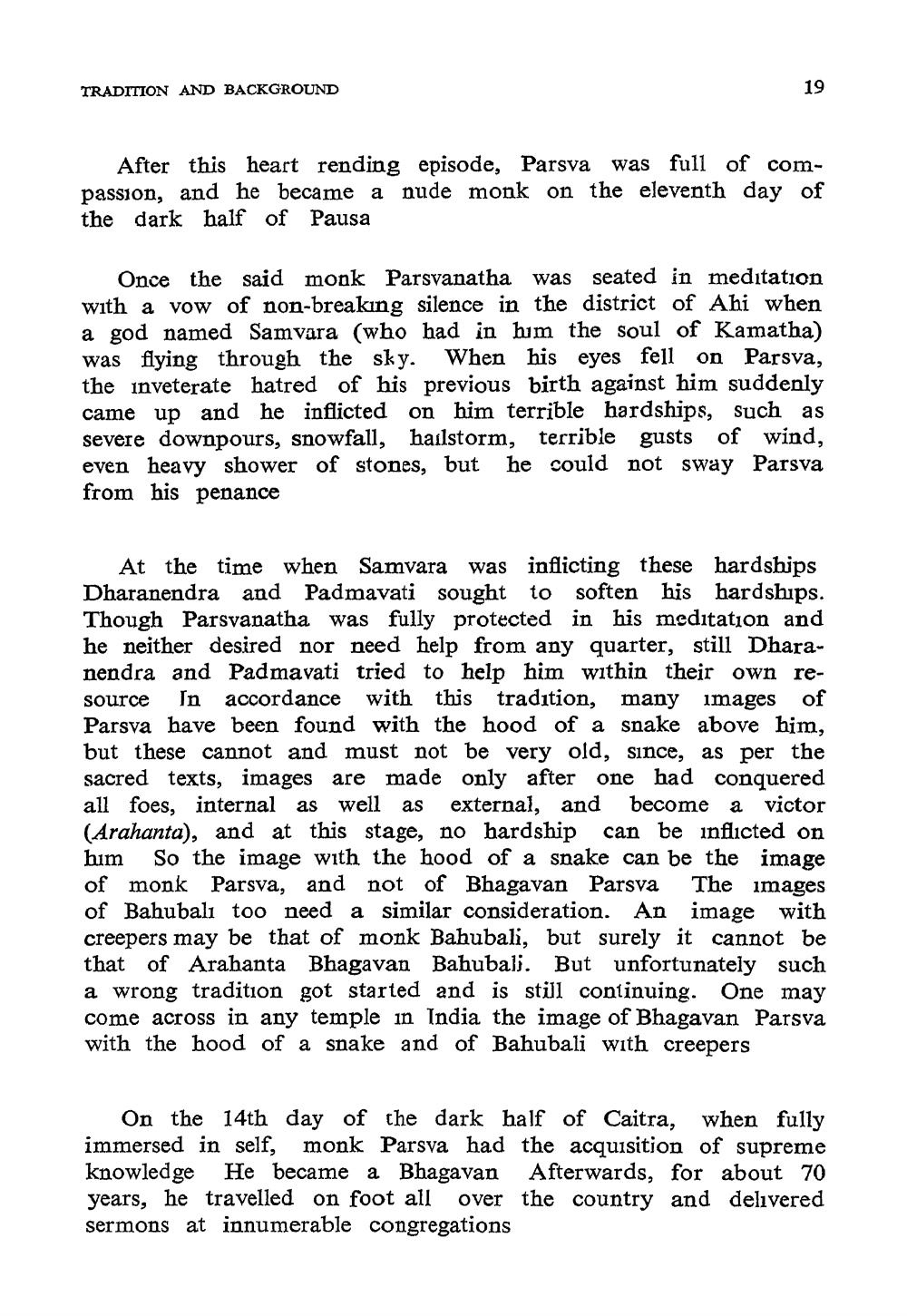________________
19
TRADITION AND BACKGROUND
After this heart rending episode, Parsva was full of compassion, and he became a nude monk on the eleventh day of the dark half of Pausa
Once the said monk Parsvanatha was seated in meditation with a vow of non-breaking silence in the district of Ahi when a god named Samvara (who had in him the soul of Kamatha) was flying through the sky. When his eyes fell on Parsva, the inveterate hatred of his previous birth against him suddenly came up and he inflicted on him terrible hardships, such as severe downpours, snowfall, hailstorm, terrible gusts of wind, even heavy shower of stones, but he could not sway Parsva from his penance
At the time when Samvara was inflicting these hardships Dharanendra and Padmavati sought to soften his hardships. Though Parsvanatha was fully protected in his meditation and he neither desired nor need help from any quarter, still Dharanendra and Padmavati tried to help him within their own resource In accordance with this tradition, many images of Parsva have been found with the hood of a snake above him, but these cannot and must not be very old, since, as per the sacred texts, images are made only after one had conquered all foes, internal as well as external, and become a victor (Arahanta), and at this stage, no hardship can be inflicted on him So the image with the hood of a snake can be the image of monk Parsva, and not of Bhagavan Parsva The images of Bahubali too need a similar consideration. An image with creepers may be that of monk Bahubali, but surely it cannot be that of Arahanta Bhagavan Bahubali. But unfortunately such a wrong tradition got started and is still continuing. One may come across in any temple in India the image of Bhagavan Parsva with the hood of a snake and of Bahubali with creepers
On the 14th day of the dark half of Caitra, when fully immersed in self, monk Parsva had the acquisition of supreme knowledge He became a Bhagavan Afterwards, for about 70 years, he travelled on foot all over the country and delivered sermons at innumerable congregations




